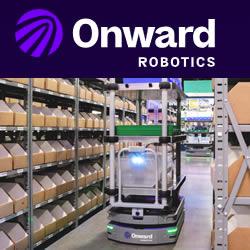Irishman's soft robotics exosuit wins major tech award
Care-O-bot 4 celebrates its premiere as a shopping assistant
Relay Is a Robot Butler Coming to a Hotel Near You
Self-drive delivery van can be 'built in four hours'
New US Robotics Roadmap calls for increased regulations, education and research
As seen on TV! Neural Enhance
Sweden places ban on flying camera drones without surveillance permits
Virtual Immortality: Reanimating characters from TV shows
The 10 Coolest Drones at the World's Biggest Robot War Games
This Robot Can Do More Push-Ups Because It Sweats
What Leading AI, Machine Learning And Robotics Scientists Say About The Future
Omnidirectional Mobile Robot Has Just Two Moving Parts
Deep-Diving Robots Zap, Kill Invasive Lionfish
Autonomous mobile robots can accomplish a variety of tasks.
Robodex Ghost Robotics™ Launches Ghost Minitaur™ Direct-Drive Legged Robot Platform
Records 496 to 510 of 622
First | Previous | Next | Last
Featured Product

